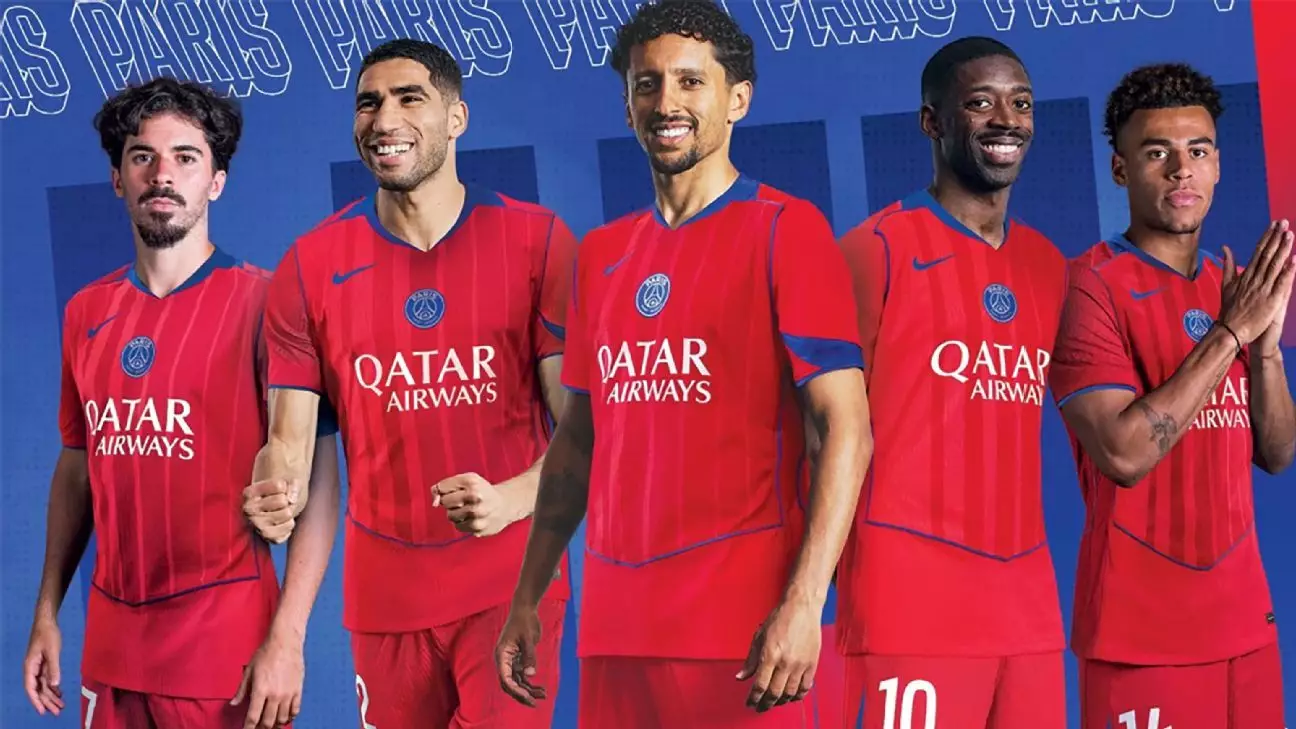Paris Saint-Germain’s latest unveiling of their third kit for the 2025-26 season marks a deliberate departure from modern minimalism, instead paying homage to the club’s storied past. By drawing from the vibrant design elements of the early 2000s, PSG showcases a daring marketing move that leverages nostalgia as a powerful emotional connector for fans. Such strategies resonate profoundly with supporters who grew up in that era, evoking memories of iconic matches and legendary players. The choice to revive a design inspired by Nike’s famed “Total 90” range is not merely about aesthetics; it’s a calculated effort to reinvigorate the club’s brand identity and reignite energy within its fanbase, especially in an increasingly crowded and competitive European football landscape.
A Craftsman’s Reflection on the Design Choices
The decision to embrace a retro style is as much a statement about identity as it is about aesthetics. The new PSG kit features a deep red palette with gradient striping and striking blue accents, paying homage to the unmistakably bold look of the early 2000s. Borrowing the classic shield-shaped paneling and faux-winged collar yoke, the design rekindle memories of an era when football kits were loudly expressive and daring—characteristics that have somewhat diminished in recent years. From a critical standpoint, while this nostalgic approach is audacious, it may risk alienating newer fans who favor sleek minimalism and modern design. Yet, those who appreciate football’s rich history will likely see this move as a brave celebration of tradition amid a rapidly evolving sport.
Beyond Style: Cultural Significance and Future Implications
This retro revival extends beyond mere fashion—it’s a strategic cultural statement. PSG’s reissue of their 2004-05 home shirt further underscores this point, connecting past glories and struggles. The period was marred with frustration, yet it also marked moments of raw passion and resilience, which the club now seeks to reinterpret in a modern context. This duality enhances the kit’s symbolic value, turning it into a collectible artifact that celebrates both nostalgia and perseverance. Such initiatives can foster a sense of continuity, reminding fans that even amidst championship triumphs, the club’s roots remain a core part of its identity. As football clubs globally begin to embrace historical design elements, PSG’s move might set a precedent, demonstrating that embracing one’s past can be a vital avenue for future growth and unity.
While some purists may challenge this aural nod to yesteryear as merely a commercial gimmick, the strategic deployment of nostalgia at PSG hints at a deeper understanding: in a sport defined by fleeting moments, identity anchored in history can be a formidable asset. As the club looks forward to future competitions, it carries with it not only a bold new kit but also a narrative that champions resilience, tradition, and an unrelenting desire to stand out in the crowded arena of modern football.

